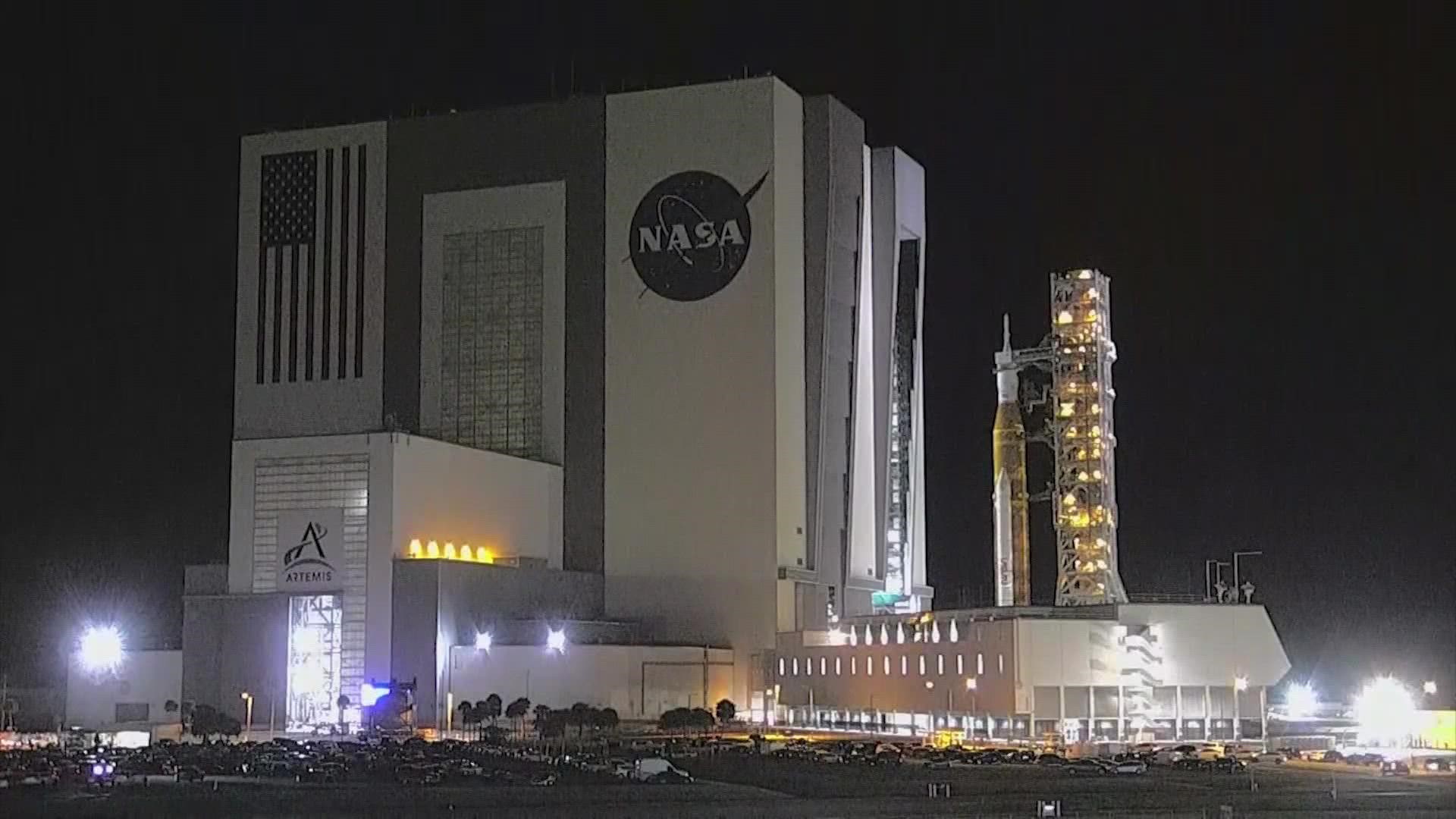HOUSTON — Thousands of people at NASA and its partners have worked years to make the return to the moon -- and eventually Mars -- a reality. All of their hard work on the Artemis mission will be honored when Orion launches on Monday, Aug. 29.
There won't be any people on board the Orion spacecraft for the Artemis 1 phase, but the employees who helped make it happen will still be a part of it.
NASA turned to the University of Houston to engrave their names on microchips that will be on the spacecraft. Long Chang with the Cullen College of Engineering found a way to make it happen.
“NASA wanted microchips with everyone’s name on them,” Chang said. “But I had some creative liberties in the design because they didn’t really know what we were capable of.”
He used electron beam lithography and reactive ion etching to engrave the nearly 30,000 names onto each of the 80 microchips. And he added a special surprise for NASA.
“I figured out how to do this so quickly that I decided to position the names so when you see it, it looks like the NASA logo, the Artemis logo and the European Space Agency logo,” Long said. “Each logo is made of those 30,000 names.”
When the spacecraft returns, the microchips will be given to key players in the U.S. and Europe as mementos of the historic mission and an expression of gratitude for all of their hard work.
RELATED: TSU teaming up with NASA for out of this world partnership that will open doors to the future
"By flying our names aboard the maiden Artemis flight to the Moon, a small part of each of us will be flying up there too," Didier Radola with the European Space Agency’s lead contractor said.
“We are really excited to be part of this critical and historic piece of hardware that will take humans back to the moon," said Mike Riley, CEO of AMRO, another key partner.
NASA said a successful mission will demonstrate its capability to "extend human existence to the moon and beyond."
For his part, Long hopes the project raises the visibility of the UH nanofabrication facility and the work they are doing.

